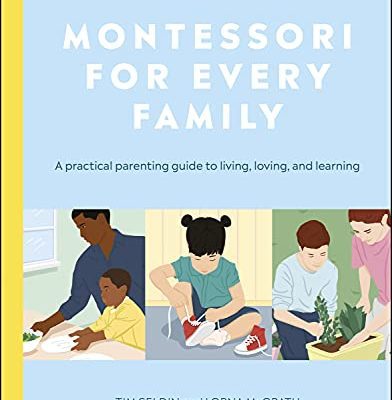
I want to acknowledge my colleague, Renee Duchany-Farkas, whose own work is also reflected in my presentations on school cultures of partnership.
A school is far more than bricks and mortar, playgrounds and projectors, or even a well-managed budget. At its heart, a school is a living, breathing community made up of people—students, families, teachers and staff, administrators, and the board. A great school doesn’t simply educate; it unites. It brings people together around shared values, common goals, and a collective commitment to the success and well-being of every child.
At the core of this unity is partnership—partnership at every level. Today’s schools must prioritize authentic collaboration between families and faculty, built on trust, respect, and mutual support. This is not a new idea, but it is more urgent than ever. Life has changed dramatically for many families over the past several years. Between economic uncertainty, increased mental health concerns, and the fast-paced demands of modern parenting, families are under pressure. As school leaders, we have a powerful opportunity to reimagine the relationship between school and home—not just as a necessary part of student success, but as the very foundation of a thriving school culture.
The Need for Partnership
The phrase “it takes a village” has never been more relevant. Families today are seeking more than academic excellence—they are looking for community, guidance, and connection. They want their children to be safe, supported, and known. Increasingly, they are also looking for help. Many parents feel overwhelmed, anxious, and isolated. In 2024, the U.S. Surgeon General’s report spotlighted the mounting pressures families face, citing concerns around safety, time constraints, health, stress, and loneliness. For many parents, raising children feels like essential work—but work they are expected to do with little support.
Parents come to us with deep hopes and dreams for their children. They want to be the best parents they can be, but many are anxious and unsure. They hope to build positive relationships with their children’s teachers and feel like valued members of the school community. They want to belong. They want to contribute. And they want to know that their voice matters.
This is why a meaningful partnership between schools and families is so critical. It is not about ceding control or catering to every demand. Instead, it is about establishing a culture of shared responsibility. Schools and families each bring unique and complementary perspectives to a child’s development. When we work together—when we create space for honest communication and mutual respect—everyone benefits: the student, the parent, the teacher, and the school as a whole.
Rethinking the Parent Experience
To lead effectively in this area, we must shift our mindset. Too often, schools focus exclusively on the student experience while treating parents as bystanders or occasional visitors. However, the truth is that every parent has a dual experience with our schools. One part is tied to their child’s journey—how their child is treated, what they’re learning, how they are growing. The other part is personal—how the parent feels when they walk onto campus, how staff communicate with them, how welcomed and respected they feel.
In today’s world, we must take seriously the concept of “the parent experience.” Every touchpoint—emails, conferences, drop-off routines, social events—shapes how families perceive the school’s culture and values. Do they feel heard? Informed? Valued? Empowered? Or do they feel overlooked, confused, or left out?
This is not just a philosophical question—it’s a strategic one. A positive parent experience drives retention, engagement, and word-of-mouth referrals. It builds a culture of trust. And it directly impacts how children feel about school.
Customizing the Experience
One powerful idea for schools to embrace is the concept of a “Red Carpet Experience” for parents. In other industries, the customer experience is meticulously curated. Why shouldn’t schools take the same care? Parents see us daily. They remember how they were greeted. They notice whether communication feels rushed or thoughtful. They sense when teachers are present versus when they are burned out.
Great schools make every effort to personalize the experience. They offer proactive check-ins with new families. They schedule informal gatherings like “Coffee and Conversations.” They send welcome emails before school begins and follow up afterward. They create opportunities for parents to ask questions and offer feedback. And they don’t relegate parent engagement to the admissions office—it’s everyone’s responsibility.
Building pride, trust, and loyalty starts with understanding our families and making them feel seen.
Communication: The Foundation of Partnership
Of course, communication is at the heart of any strong partnership. Yet too often, communication between schools and families is reactive or inconsistent. To truly serve our communities, we must be intentional. That means:
- Creating clear guidelines about who communicates what, when, and how.
- Making time for regular updates from teachers to parents—and vice versa.
- Offering multiple channels and formats to meet the needs of diverse caregivers.
- Using technology strategically—but never in place of human connection.
Strong communication systems prevent misunderstandings, reduce stress, and foster a sense of transparency and alignment.
Supporting Teachers
Partnerships with families thrive when teachers feel confident and supported. But we must acknowledge that working with parents is not always easy. Many teachers feel more comfortable focusing on their students. They may worry about difficult conversations or feel unprepared for conflicts that arise.
That’s where school leaders come in. We can:
- Offer professional development on communication, boundary-setting, and conflict resolution.
- Provide role-play opportunities and scripts for challenging conversations.
- Design consistent formats for parent-teacher conferences.
- Sit in on meetings when needed.
- Model positive family interactions.
When teachers feel prepared, their confidence grows—and so does the quality of the school-family relationship.
Making It a Whole-School Priority
True transformation requires a school-wide commitment. This begins with leadership. Framing the parent experience as a core strategic priority—not a sideline issue—is the first step. From there, we can:
- Form leadership task forces focused on improving family partnerships.
- Share stories of success at staff meetings.
- Embed family partnership goals into strategic plans and staff evaluations.
- Solicit feedback regularly through surveys, forums, or parent councils.
Everyone in the school—from the front desk to the classroom—needs to see themselves as a key part of the parent experience.
Building a Partnership Strategy
A strong parent partnership strategy includes three essential components:
- Listening to Parents:
Gather input through focus groups, surveys, informal chats. Create space for parents to express their hopes, concerns, and ideas. - Equipping Teachers and Parents:
Offer workshops for parents on school philosophy, child development, and how to support learning at home. Train teachers in relationship-building skills and cultural competence. - Creating Meaningful Engagement Opportunities:
Host speaker series, organize discussion groups, celebrate cultural diversity, and plan community events that bring families together. Invite parents to volunteer, lead initiatives, or simply be present.
These steps create a virtuous cycle: trust builds engagement, and engagement builds trust.
Conclusion
At its best, a school is not just a place where children learn—it’s a place where families grow, where teachers thrive, and where communities come together. Building strong partnerships with families isn’t a luxury. It’s a necessity. It requires thoughtful leadership, school-wide alignment, and an unwavering belief in the power of community.
As school leaders, we are uniquely positioned to unlock this potential. When we nurture faculty and family partnerships, we do more than improve school culture. We transform lives.








